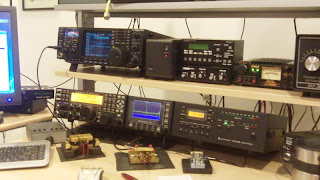Wichita Mountains activation

I traveled to the Wichita Mountains in southwest Oklahoma this week on a summit activation trip. As with most of my trips, my execution didn't live up to my planning. I had hoped to activate 4 summits in two days, but wound up activating two and wisely calling it quits. I have to remember my legs are 65 years old take it easy on them. As for the activations, the first on Wednesday was up Elk Mountain. It's a pretty 1.1 mile trail that's took me about an hour to climb. The only problem was the weather. I'd studied weather reports and Wednesday was supposed to be sunny and in the 50s -- perfect hiking weather. When woke in Lawton, OK Wednesday morning there was very thick fog. My plan was to do Elk Mountain in the morning and Mount Scott in the afternoon, then pick up a couple of nearby summits on Thursday and head home. So I stuck to plan and was at base of Elk Mountain at 9 a.m. and in the fog. I kept telling myself it would burn off by the time I got to the to





